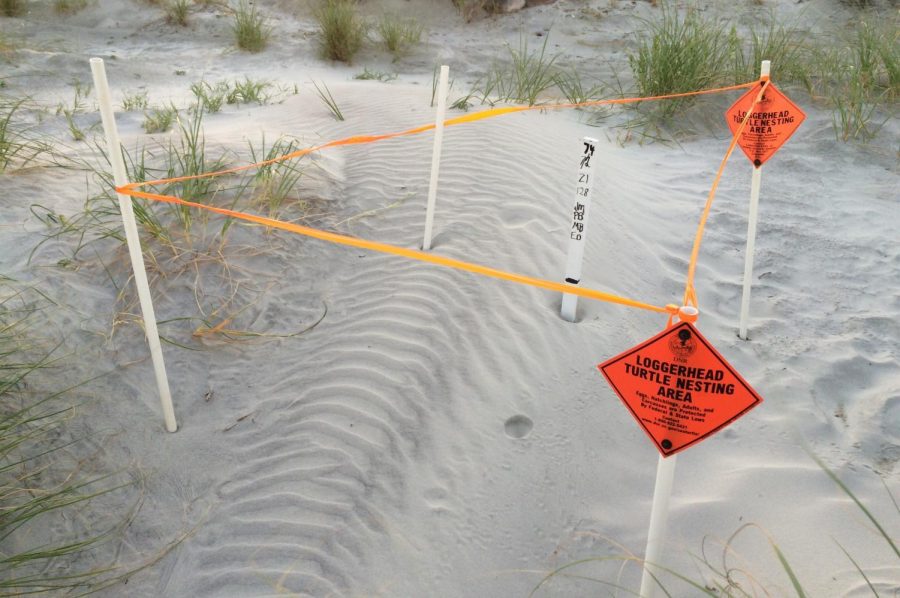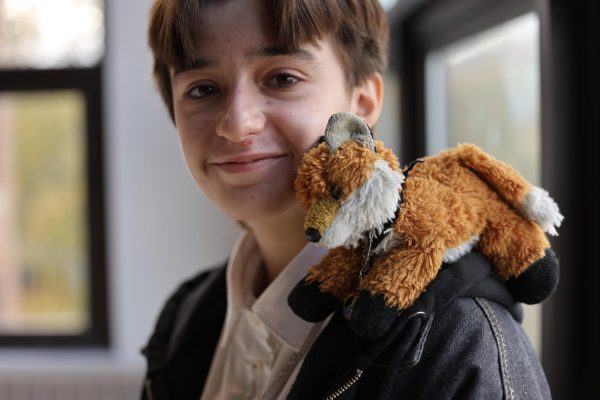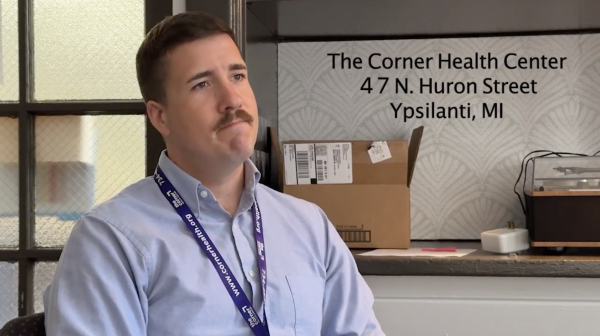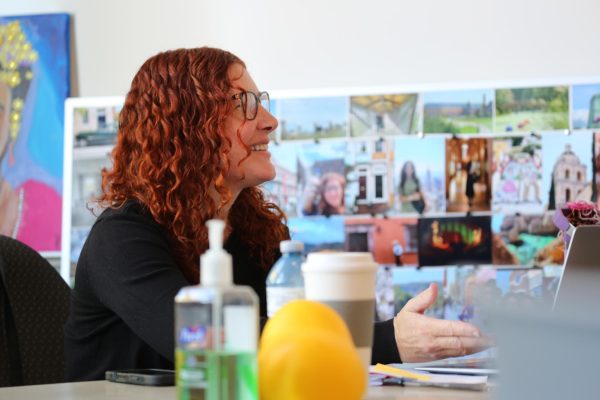A turtle team effort
The Turtle Team takes inventory for a loggerhead sea turtle nest located on Fripp Island, South Carolina. In August 2016, Leah Dewey took a vacation to Fripp to assist the Turtle Team and help the turtles get out to the sea.
Community High School student Leah Dewey looked over the beaches of Fripp Island and its sun setting over the horizon. She was completely mesmerized by what seemed to be hundreds of bike tracks leading straight into the water. But it turns out the bike tracks weren’t bike tracks at all, they were the tracks of baby sea turtles.
“You can see every single turtle and where it went,” Dewey said. Dewey — along with her mother and step-dad — goes to Fripp Island in South Carolina about every other summer to aid the hatchlings in the incredibly short but intense journey from their nests on the beach to the shoreline.
“If we’re going to interfere with nature so that we can have a nice vacation, I feel like we have to give back,” said Kelly Stupple, Leah’s mom.
According to the Fripp Island Turtle Team, the organization Dewey works with, there are an average of 45 nests that average at about 114 eggs per nest. Out of all those hatchlings, the Turtle Team successfully gets 73 percent, or 7,028 of those hatchlings into the water each year.
The adult turtles came to shore to nest sometime in May. After the nesting took place, the Turtle Team excavated them to count the eggs. Once counted, the nest was put back in place and marked with a nearby stake. Between six and 12 weeks later the turtles began to emerge.
Dewey and the Turtle Team went out in the evenings of August to take inventory once more as the turtles were hatching. And while the turtles build up strength and make their way to water, the volunteers warded off the crabs and gulls to ensure their success.
“They are very, very small,” Dewey said. “Most of their eyes are clouded with sand. They don’t open their eyes, not for a while.”
The turtles on Fripp Island were loggerhead sea turtles, and very rarely a leatherback might’ve hauled itself onto the beach to nest as well. Dewey described the hatchlings as the size of the palm of your hand with round heads, curve beaks and large, beady eyes that crust over from being buried multiple feet deep into the sand.
“Some of them have deformed arms and legs which is sad,” Dewey said. “But it’s your job to help them to work up the strength and have them walk into the sea.”
Having deformed flippers and eyes that are crusted shut didn’t help the turtles with their journey, but that’s why Dewey and the Turtle Team were there. Without them very few hatchlings would’ve even touched the salty water. Crabs, seabirds, dogs and even touchy children could’ve gotten in the way of their success.
And even if they made it to water, it still doesn’t end there. Seabirds are still an issue, new predators emerge and currents and tides now get involved. Dewey witnessed one turtle get washed back up on the beach because he still wasn’t strong enough to get out to open water. One member of the Turtle Team had to swim out past the rough waters with the turtle in his hand to help him finish his first leg of the journey.
Out of all the challenges the turtles face, humans have to be the worst.
There can be turtles that hatch at the time where the moon it touching the horizon. They use the moonlight to go in the right direction when it’s dark outside, but now with cities on these beaches many stray into the streets and get collected in storm drains or get run over. Fripp Island has rules for the buildings facing the shore, but it still happens in plenty of other places.
“Unfortunately there’s a lot of the world that is working against them,” Dewey said. “Watching them go out to the ocean, you just think about the life they’re going to have. They’ll try to swim out towards the Gulf and someday they’ll come back right there to that same spot and have babies, it’s really beautiful.”
Now with the Turtle Team, the challenges that the Fripp Island hatchlings face seem like a set of hurdles instead of brick walls.
“You sometimes think about what would happen if you’re not there and you see what happens when the tracks just stop and they don’t get out to the water,” Dewey said. “That’s upsetting, but it’s nice to know that you’re doing something and to be able to help them.”









